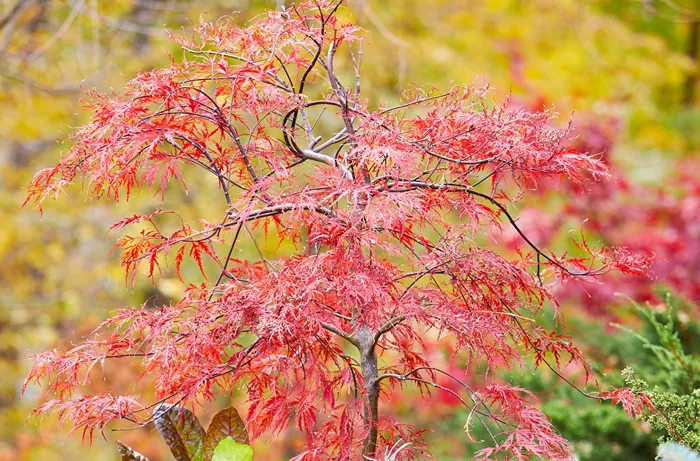The second week of October is an ideal time to enjoy the vibrant colors of fall. In Western Washington, Japanese maples are known for their reliable autumn hues. Local nurseries are well-stocked with these adaptable trees, making it easy to enhance your garden’s color palette.
For those interested in shrubs, consider the striking red of the burning bush (Euonymus alatus ‘Compacta’) or any variety of Nandinas, also known as Heavenly Bamboo. Adding a groundcover with bright red berries, such as the spreading Cotoneaster, can create a stunning display of fall color every year.
Gardening Q&A
Q: I have two Japanese maples that turn beautiful red in October. One is under four feet tall, while the other has grown taller than our house. Can I prune the taller tree to resemble the smaller one? When is the best time to prune? – J.H., Tacoma
A: Unfortunately, you cannot make the tall tree look like the smaller maple. Japanese maples are best pruned in late winter or early spring while they are dormant and leafless. Even with pruning, the tall tree will not remain compact. The shorter maple is grafted onto a dwarf rootstock, preventing it from growing taller. You can prune both trees in February or March to remove dead wood, crossing branches, and to shape the trees. When pruning, follow each branch back to a joint before making your cut. Grafted Japanese maples can be pruned to highlight their trunks, but take care not to remove more than one-third of the branches.
Q: My burning bush has been turning yellow since summer and hasn’t developed red leaves. I spent $30 on this shrub, and I’m worried it’s dying. I planted it in organic compost and used a sprinkler system to keep the soil moist. Will it survive? – D.B., Olympia
A: Your burning bush may survive, but it needs immediate attention. Dig it up and replant it on a berm or raised bed with well-draining soil. This shrub requires good drainage, full sun, and some time for the soil to dry out. Based on your sprinkler system usage, it sounds like the shrub has been overwatered, leading to root rot. Transplanting it to drier soil is your best chance for recovery.
Q: I have ajuga growing as a groundcover in a shaded area of my garden. It has thrived, and I want to transplant some to another location. Can I do this now, or should I wait until spring? – P., Email
A: You can go ahead and transplant your ajuga this week. As long as you plant it in a new location before freezing temperatures set in, it should adjust well. However, remember not to fertilize in the fall, even when transplanting. You want your plants to enter dormancy during this time, and feeding them could disrupt that process.
Related topics:
- Prescribed Burns at Jasper Ridge Revive a Rare Plant
- New Seed Fossil Reveals Insights into How Plants Spread by Wind
- Create a New Flowerbed Now for a Beautiful Spring Garden


